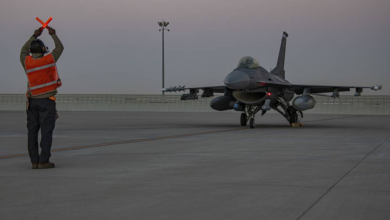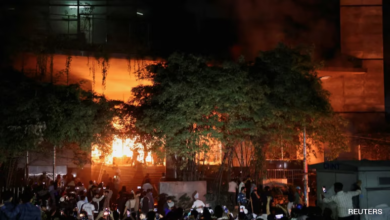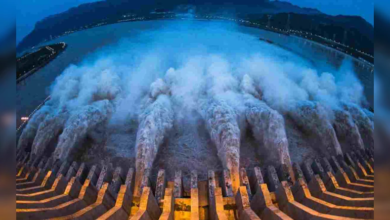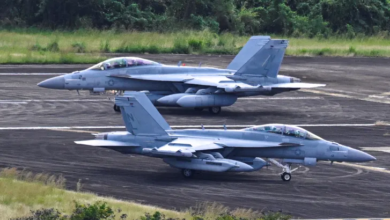Yemen's Houthis Claim Fifth Attack on USS Harry S. Truman
The Red Sea has long been a strategic artery for global trade and military maneuvers.

By Muskaan Nargis
The geopolitical tensions in the Red Sea have reached a boiling point as Yemen’s Houthi group announced their fifth attack on the USS Harry S. Truman aircraft carrier. This latest escalation marks a dangerous precedent in a region already grappling with instability, highlighting the fragile balance of power between regional actors and global superpowers.
As a writer I cannot help but view this incident as a critical turning point, forcing us to confront the unyielding reality of proxy wars, power struggles, and the relentless quest for dominance in one of the world’s most strategic waterways.
The Red Sea has long been a strategic artery for global trade and military maneuvers. It connects the Mediterranean to the Indian Ocean through the Suez Canal, making it a vital route for oil shipments, commercial trade, and military deployments.
For Yemen’s Houthi group, attacking an American aircraft carrier is not merely an act of defiance but a message to the world: their presence and resistance cannot be ignored. The Houthis, who have controlled significant parts of Yemen since 2014, have positioned themselves as a formidable force against U.S. allies in the region, particularly Saudi Arabia.
This attack, however, goes beyond regional dynamics. It is a statement against U.S. military involvement in the Middle East and its perceived role as a hegemonic power that prioritizes its interests over the sovereignty of local nations.
The USS Harry S. Truman, a Nimitz-class aircraft carrier, is more than just a vessel. It is a floating fortress, a symbol of American military might, capable of deploying fighter jets and launching precision strikes across continents. For the Houthis to repeatedly target such a behemoth underscores their growing confidence, bolstered by their access to advanced weaponry and strategic support.
The question arises: how have the Houthis managed to launch five attacks on such a heavily fortified vessel? This reflects not only their tactical evolution but also the vulnerabilities inherent in projecting power far from home.
This incident raises alarm on multiple fronts. Firstly, it underscores the increasing militarization of the Red Sea, transforming it into a volatile flashpoint where regional ambitions clash with global interests. Secondly, it highlights the risks posed to international shipping and the global economy, as attacks on military vessels could spill over into commercial lanes.
Lastly, and perhaps most critically, it calls into question the effectiveness of current diplomatic and military strategies in curbing the Houthis’ growing assertiveness.
The Houthi attacks on the USS Harry S. Truman are not isolated incidents but a reflection of a deeper malaise plaguing the region. Yemen has been ravaged by war for nearly a decade, with its people enduring unspeakable suffering. The Houthis’ military aggression is, in part, a response to years of foreign intervention, blockades, and economic devastation.
However, such actions also exacerbate the cycle of violence, providing justification for further military responses that often ignore the human cost. The question that remains is: who benefits from this endless conflict?
As I pen these words, I cannot help but feel a sense of unease. The Red Sea, a lifeline for so many, is being turned into a theater of war. The world’s silence on the underlying issues—poverty, displacement, and the lack of a political solution in Yemen—is deafening.
While the Houthis’ actions cannot be condoned, they must be understood in the context of a broader struggle for autonomy, dignity, and survival. The U.S., too, must reassess its role in the region. Military might cannot solve problems rooted in decades of marginalization and injustice.
This is not just a battle for control of the seas but a fight for the soul of a region that has long been overshadowed by external interests. The only path forward lies in diplomacy, dialogue, and a genuine commitment to addressing the root causes of conflict.
The Red Sea’s waters run deep—not just in geography but in the layers of pain, power, and politics that define it. The world must tread carefully, for the consequences of missteps here could ripple far beyond its shores.












